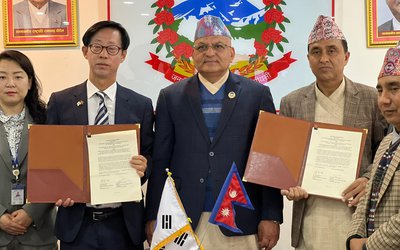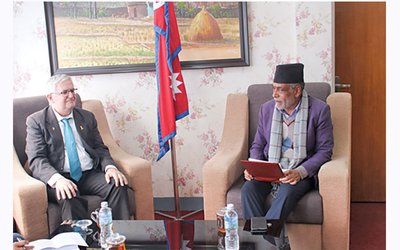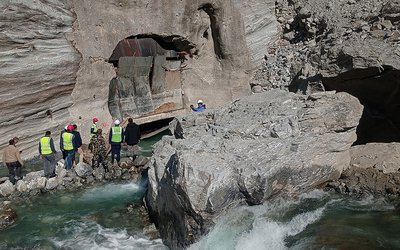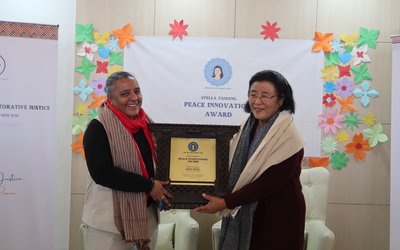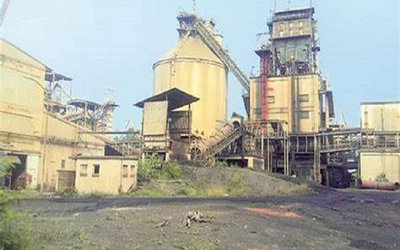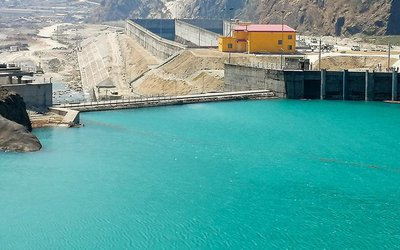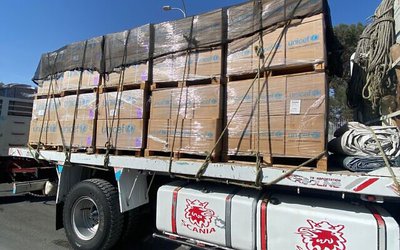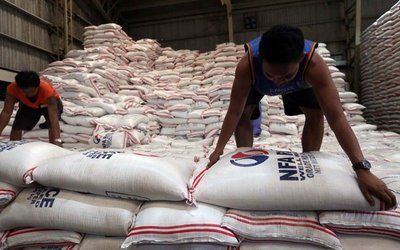
Although Nepal is one of the most vulnerable countries of the world in terms of disaster, its data management system is still poor. One has to visit various sites to understand the state of disasters in Nepal.
According to a global report, Nepal is ranked 20th in the list of the most multi-hazard prone countries in the world and 30th in terms of flood risks. Inundation along the river banks in the Terai plains every monsoon poses threat to lives and livelihood of many. In the last monsoon, an unusually massive flood, the biggest of its kind in decades, affected 35 (18 severely affected) of the country’s 77 districts affecting over 1.7 million people; leaving 460,000 displaced, damaging more than 190,000 houses and leaving 134 dead of which 44 were women.
Events of such kind have potential to trap thousands of families under the line of poverty and halt the country's development. It becomes more and more important to focus on building capacity on concepts and practices of flood risk reduction and resilience using different measures. Knowledge and skills are important and use of advanced technologies can bring about large scale change in inspiring policies, sharing innovation, best practice and learning and finding solutions.
In an effort to identify innovative and cost-effective ways to implement disaster risk reduction efforts at the community and national levels for resilience against flooding, Government of Nepal (GoN) has been working with different actors at international, national to community levels.
At a time when there is a need for a unified portal on flood resilience, Ministry of Federal Affairs and Local Development (MOFALD) has launched the Nepali version of Flood Resilience Portal http://floodresilience.net.np/ to support exchange of information and provide a consolidated information gateway to flood risk reduction and management.
At an event organized by Practical Action Nepal, the Minister of State for Local Development recently opened the portal. The portal is an outcome of Zurich Global Flood Resilience Program and it is an innovative initiative, involving a team of different civil society actors - Zurich Insurance, Wharton Risk Management, Decision Process Centre, International Institute for Applied System Analysis (IIASA), International Federation of Red Cross and Red Crescent Societies (IFRC) and Practical Action.
Krishna Bahadur Raut, Joint Secretary, Ministry of Home Affairs, Juja Kim, Head of IFRC Nepal Office, Dr. Rishi Ram Sharma, Director General, DHM; and Achyut Luitel, Director, Practical Actionm, attended the first such program, where all stakeholders joined hands to stand for a common cause.
The portal is a space where practitioners can find the very best practice or solutions on building resilience to flooding. There exists a number of web based information, predominantly in the wider Disaster Risk Reduction (DRR) field available to practitioners. However, gap lies in the standardization and management of the available knowledge. Nepali Flood Resilience Portal (NFRP) is expected to enable practitioners access the most locally relevant flood risk reduction resources and inform resilience building activities with current good practices.
At a time when MOFALD is strengthening the local units for flood resilience focusing on need of localized and contextualized knowledge in Nepal, this portal will likely to sever the broader interest of stake holders.
As the Government is committed to follow the SENDAI Framework and SDGs to mitigate disaster risks and reduce vulnerability in Nepal, there is the need to have a close partnership among civil society organizations, development partners, private sectors and media.
“The innovative multi-ownership initiative of Zurich Global Flood Resilience Program is a great support to create space for practitioners to share their innovation and best practice," Suresh Adhikari, Joint Secretary of MOFALD, said, adding that the government has recently formulated Disaster Risk Reduction and Management Act which has clarified rights, responsibilities and duties in terms of DRR to central, provincial and local governments. “I call development partners, civil society organizations and private sectors, including the media to further scale up government's initiatives. I am also glad to share that MoFALD would like to take the ownership of the Nepali version of Flood Resilience Portal," Adhikari, chairperson of the program, said.
Head of IFRC, Nepal, Juja Kim also shared that the portal has demonstrated a strong alliance and partnership in commitment to disaster risk reduction and building resilience.
During the program, Dinanath Bhandari, the coordinator of Practical Action, made a presentation on the portal and shed light on its dynamics. The presentation incorporated portal's current features and opportunities to Nepali DRR actors and community to learn and share through this.
Bhandari highlighted its significance in line with the MOFALD’s plan to set up DRR and climate change information centre at each local government level across the country. This will provide space to store and retrieve information.
- FM DR.RANA INDIA VISIT: Strengthening Relations
- Jan 02, 2025
- BUTWAL-HETAUDA Connected By 220 kV
- Jan 02, 2025
- PM OLI' CHINA VISIT: A Success For Business
- Jan 01, 2025
- ISRAELI AMBASSADOR SPEAKS: Israel For All Possible Support To Nepal
- Jan 01, 2025
- NEPAL-INDIA ENERGY TRDE: A Silver Lining For Nepal
- Dec 31, 2024

